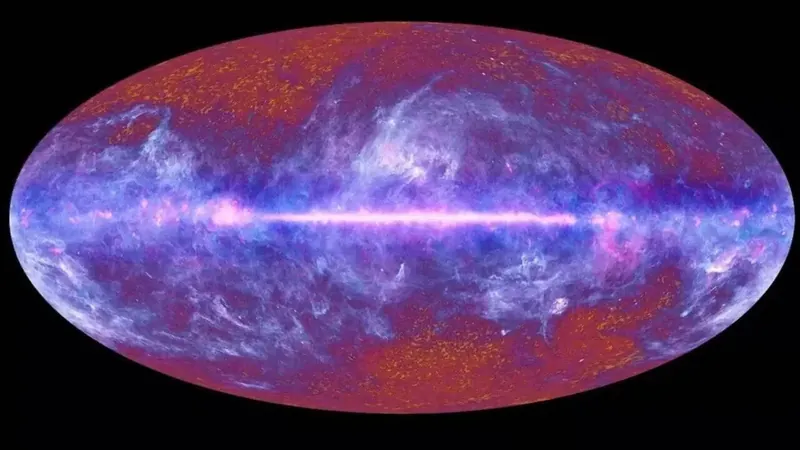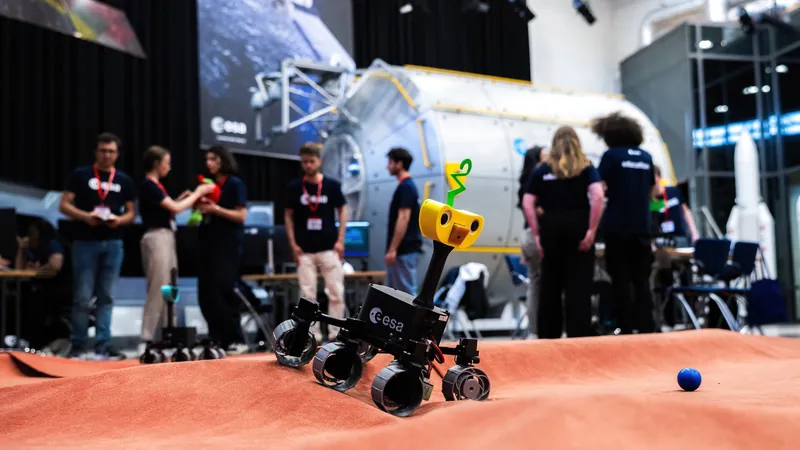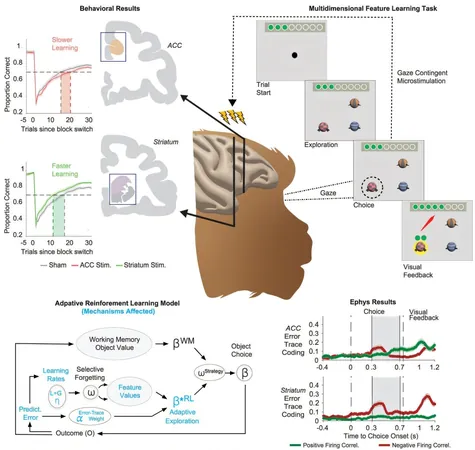
Groundbreaking Discovery: Earth-Based Telescopes Trace the Universe's Origins
2025-06-16
Author: Ming
A Historic Scientific Breakthrough
In a monumental scientific leap, researchers have captured a faint microwave signal dating back 13 billion years, originating from the Cosmic Dawn—an era just after the Big Bang when the universe began to sparkle with its first stars and galaxies. This unprecedented detection was achieved not in the depths of space but using high-altitude Earth-based telescopes perched in the Andes mountains of northern Chile.
What is the Cosmic Dawn?
The Cosmic Dawn marks a transformative period in the early universe, roughly 50 million to one billion years after the Big Bang. During this time, the first stars ignited, lighting up a previously dark and neutral universe. Known as Population III stars, these stellar giants produced intense ultraviolet radiation that reionized surrounding hydrogen gas, allowing light to traverse space for the very first time.
Unlocking the Secrets of Early Cosmic Structures
As small, irregular galaxies began to form and early black holes emerged, the cosmos underwent a fundamental transformation. By studying signals like the newly detected polarized microwave radiation, scientists hope to understand how these first luminous bodies shaped the structure of the universe we see today—including our home galaxy, the Milky Way.
The Challenge of Detection
Detecting these elusive microwaves is no small feat—they are approximately a million times weaker than typical cosmic microwave background radiation. These faint signals can be easily drowned out by Earth's interference: everything from radio waves to atmospheric conditions can obscure the signal.
Overcoming Odds in Ground-Based Astronomy
Led by Professor Tobias Marriage from Johns Hopkins University, the CLASS (Cosmology Large Angular Scale Surveyor) team demonstrated that groundbreaking astronomical observations could be made from Earth. "People believed this couldn't be achieved using ground-based instruments," said Marriage, highlighting the significant challenges the team overcame, which include calibrating incredibly sensitive equipment and mitigating interference.
Innovative Techniques to Isolate Cosmic Light
The CLASS team skillfully cross-referenced their findings with data from past space missions, such as NASA's Wilkinson Microwave Anisotropy Probe and the European Space Agency's Planck telescope. This meticulous approach allowed them to filter out noise and isolate the cosmic signal originating from the early universe.
Polarized Light: A Cosmic Mystery Revealed
Light becomes polarized when it interacts with surfaces or particles. Just like sunlight reflecting off a car hood can create glare that polarizing sunglasses reduce, ancient cosmic light also became polarized as it interacted with early matter. This characteristic helps scientists discern the cosmic signals from interference, revealing precious insights into the universe's infancy.
Charting New Terrains of Cosmic Exploration
The groundbreaking results from the CLASS project open an exciting new chapter in the quest to understand the universe's origins. By exploring the interplay between the first sources of light and matter, scientists are now able to trace how early stars constructed galaxies, paving pathways to the large-scale structures of today's cosmos. This remarkable achievement affirms that advanced technology combined with clever methodologies can empower terrestrial astronomy to rival the discoveries typically reserved for space missions.
A New Era for Earth-Based Astronomy
As this research unfolds, it paves the way for deeper investigations into the formation of stars, the evolution of galaxies, and the broader narrative of cosmic history. The CLASS team's success not only reinforces the potential of Earth-bound observation but also the promise for uncovering mysteries that have long eluded astronomers.




 Brasil (PT)
Brasil (PT)
 Canada (EN)
Canada (EN)
 Chile (ES)
Chile (ES)
 Česko (CS)
Česko (CS)
 대한민국 (KO)
대한민국 (KO)
 España (ES)
España (ES)
 France (FR)
France (FR)
 Hong Kong (EN)
Hong Kong (EN)
 Italia (IT)
Italia (IT)
 日本 (JA)
日本 (JA)
 Magyarország (HU)
Magyarország (HU)
 Norge (NO)
Norge (NO)
 Polska (PL)
Polska (PL)
 Schweiz (DE)
Schweiz (DE)
 Singapore (EN)
Singapore (EN)
 Sverige (SV)
Sverige (SV)
 Suomi (FI)
Suomi (FI)
 Türkiye (TR)
Türkiye (TR)
 الإمارات العربية المتحدة (AR)
الإمارات العربية المتحدة (AR)